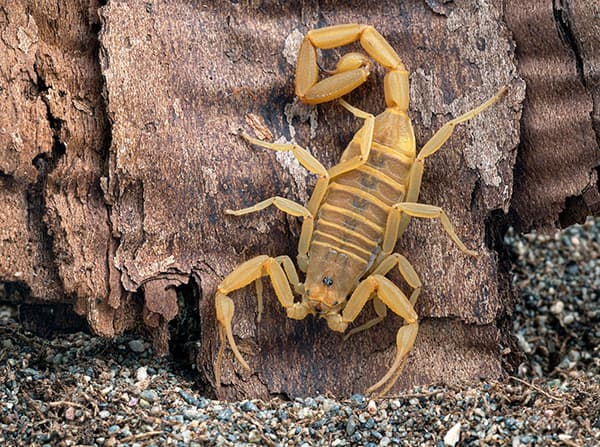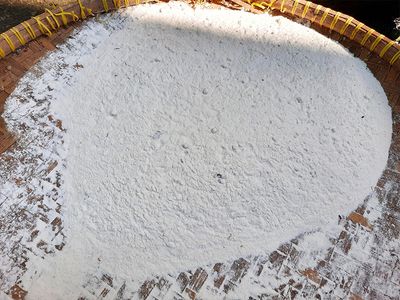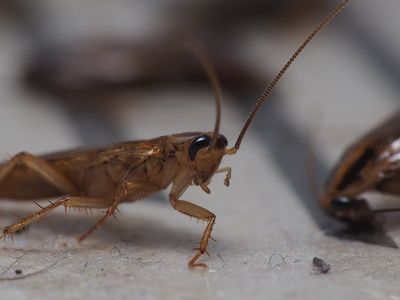What do Arizona bark scorpions look like?
Adult Arizona bark scorpions range from 5 to 8 cm. They vary in appearance with a variety of markings and colors. Some are pale, while others are more orange in coloration. Some have dark stripes. Others have stripes that blend with their overall color. As with all scorpions, an Arizona bark scorpion has a tail that curls up and a stinger on the tip.

When are Arizona bark scorpions most active?
An Arizona bark scorpion prefers nighttime activity. It will crawl around in search of food after dark, and explore every nook and crack. You may see one of these scorpions at night under black light. It glows in ultraviolet light as its skin is fluorescent.
What do Arizona bark scorpions eat?
The diet of an Arizona bark scorpion is varied. It will eat many six-legged, eight-legged, and multi-legged critters. For example, crickets, spiders, and centipedes are all on the menu. They will also eat other scorpions.
Where are Arizona bark scorpions found?
In the wild, you can find these scorpions under rocks and wood, or hiding underneath the bark of trees. On you're property, you'll find them hiding under rocks, organic debris, and any objects that block the sun. They'll tuck themselves in the gaps of outdoor furniture, and hide in footwear. You'll also find them in moist places, such as underneath a damp bathing suit.
Can Arizona bark scorpions climb walls?
Yes. These scorpions are great climbers. They scale walls in the same way they scale the bark of trees. But they can't scale every surface. When trapped in a glass jar, a bark scorpion is not able to scale the glass to get out. But, most walls have surfaces that are rough enough for a bark scorpion to climb.
Are Arizona bark scorpions dangerous?
These are the only medically important scorpions in Arizona. A sting from an Arizona bark scorpion is painful and can lead to serious medical symptoms, but fatalities are extremely rare. The last confirmed death associated with a scorpion sting in the United States was in 1968.
What should I do if I'm stung by an Arizona bark scorpion?
Step one is to stay calm. Most scorpion stings do not require medical attention. You may recover on your own.
- Clean and disinfect the wound.
- Elevate the wound to deter the venom from spreading.
- Rest any limb that is wounded to allow recovery.
- Apply a cold compress to reduce the swelling.
- Consider taking a pain reliever if you're able and/or if your doctor advises.
If you experience difficulty breathing, extreme swelling, vomiting, or shock, seek immediate medical care.
Why do I have an Arizona bark scorpion problem?
All scorpions are attracted to properties that provide what they need for survival. If you have pest activity, scorpions will want to live on your property and hunt for those bugs. If you have moist habitats, scorpions will gravitate to them. If you have lawn clutter or junk piles, these scorpions will want to explore them and hide in them.
How do I get rid of Arizona bark scorpions?
Bark scorpions are hard to track down and eliminate inside structures. It is essential to get professional assistance to make sure no bark scorpions remain inside your home. A pest management professional will address the infestation by applying systematic pest control to target and remove them. Your professional will also address the conditions that led to your infestation to help prevent future issues. For more information on how Greenway Pest Solutions can help you eliminate scorpions, simply give us a call or request a quote.
How can I prevent an Arizona bark scorpion problem?
The best way to keep scorpions out of your yard is to address the primary source of the problem. Pest reduction in your yard can have a big impact on scorpion populations. Consider a year-round home pest control plan to reduce all pest activity. Your service plan will include perimeter protection to prevent scorpions and other pests from entering your home. Contact Greenway Pest Solutions for service in Phoenix and surrounding areas.









